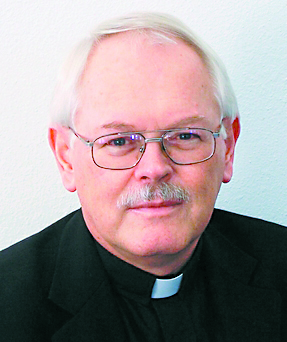IN EXILE
By Father Ron Rolheiser, OMI
What is our deepest center? Normally, we take that to mean the deepest part of our heart, the deepest part of our soul, our affective center, our moral center, that place inside of us which Thomas Merton called le pointe vierge. And that is a good way of imagining it. But there’s another.
The classical mystic, John of the Cross saw things differently. For him, the deepest center of anything is the furthest point attainable by that object’s being and power and force of operation and movement. What does he mean by that? In essence, this is what he is saying: The deepest center of anything, be it a flower or a human being, is the furthest point to which can grow before it dies.
Take a flower for example: It begins as a seed, then grows into a tiny bud that sprouts into a young plant. That plant eventually bursts forth in a beautiful bloom. That bloom lasts for a while, and then begins to dry out and wither. Eventually, what was once the substance of a beautiful bloom turns into seeds, and then in its very act of dying, the flower gives off those seeds to leave new life behind.

Thus, for John of the Cross, the deepest center for a flower is not its moment of spectacular beauty, its bloom, but its last moment when its bloom has turned to seed, and it is able to give off that seed in its very act of dying.
There’s a lesson in which goes against how we commonly assess things. When are we the most generative potentially? When do we have the greatest capacity to use our lives to give off the seeds for new life? What is our deepest center of growth?
Normally, of course, we think of the deepest center as the bloom, namely, that period or moment in our lives when a combination of good health, physical attractiveness, talent, achievement, and influence make us someone who is admired and perhaps envied. This is the time in our lives when we look our best and, as they say, are at the peak of our game. This is our bloom! The best we will ever look!
John of the Cross wouldn’t denigrate that moment in our lives. Indeed, he would challenge us to be in that moment, to enjoy it, be grateful to God for it, and to try to use the advantages and privileges that come with that to help others. But, he wouldn’t say this is the peak moment of our generativity, that this is the moment or period of our lives when we are giving off the most seeds for new life. No, like a flower that gives off its seeds in its very act of dying, we too are potentially most generative after the bloom has given way to the grey of age and our achievements have given way to a different kind of fruitfulness.
Imagine a young woman who is beautiful and talented, and becomes a famous movie actor. At the height of her career, she is in full bloom and is given the gaze of admiration. Indeed, she is adulated. Moreover, in her life outside of the movies she may be a generous person, a wonderful wife, a dedicated mother, and a trusted friend. However, that bloom is not her furthest point of growth, her deepest center, that time in her life when she is giving off the most vis-a-vis generating new life. Instead, when she is an aged grandmother, struggling with health issues, her physical looks diminished, facing the prospect of assisted living and imminent death that, potentially, like the flower whose bloom has dried and turned to seed, she can give her life away in a manner that helps create new life in a way she couldn’t do when she was young, attractive, admired, envied and in full bloom.
A similar case might be made for a star male athlete. At the height of his career, winning a championship, becoming a household name, his envied youthful athletic image seen everywhere in ads and on billboards, he is in full bloom; but at that time, he is not optimally generative in terms of his life giving off seeds to bring about new life. That can happen later, in his old age, when his achievements no longer define him, and he, like everyone else, with his hair greying, is facing physical diminishment, marginalization and imminent death. It is then, after the bloom has left the rose, that in his dying he can give off seeds to create new life.
We tend to identify a spectacular bloom with powerful generativity. Fair enough, that bloom has its own importance, legitimate purpose and value. Indeed, one of our challenges is to give that bloom the gaze of admiration without envy. Not easy to do, and something we often don’t do well. The bigger challenge however is to learn what we ourselves are called to do after the bloom has left the rose.
(Oblate Father Ron Rolheiser is a theologian, teacher and award-winning author. He can be contacted through his website www.ronrolheiser.com.)
